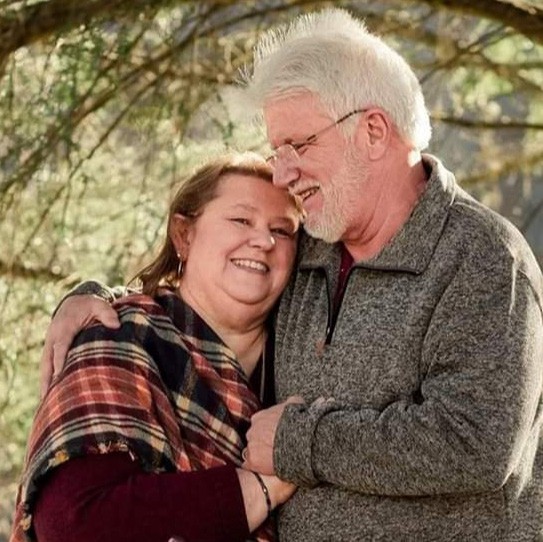Robin Eslinger has never had any major health issues. However, she recently began having episodes where her heart felt like it was racing, even to the point where she would have to sit down and rest. She felt so fatigued that she would cancel plans because she didn’t have the energy to go out to dinner or spend time with her family. She knew something had to change.
“I would go from a resting heart rate of 60 beats per minute up to 150 with no exertion,” Eslinger says. “So I would just have to wait for it to settle down. My body felt like I had just run a marathon even though I was sitting. It was exhausting and scary. I didn’t want to drive for fear I would have an episode and not be in control.”
She was diagnosed with atrial fibrillation or A-fib, a common heart arrhythmia in which the heartbeat is erratic. Although not immediately life-threatening, A-fib can lead to complications like heart failure or stroke. Her primary care physician referred her to Albert Sey, MD, MPH, electrophysiologist at Fort Sanders Regional Medical Center.
Ready to Try Anything
Over the course of several months, Dr. Sey recommended that Eslinger try several different medications to regulate her blood pressure and A-fib symptoms. He also told her about a new procedure called cryoablation, a minimally invasive procedure where a thin, flexible tube called a balloon catheter is used to locate and freeze the heart tissue that triggers the irregular heartbeat.
Although hesitant about surgery at first, she says, “After trying different medications that didn’t improve my condition, I was ready to try anything to fix it because the episodes kept happening more frequently. I was ready!”
A New Approach
Dr. Sey explains that while there is no cure for A-fib, the goal is to get the patient into a state of having fewer or no symptoms.
“We evaluated her thoroughly and monitored her A-fib. We did try her on medication for a few months but she was still having breakthrough episodes and her heart was not staying in rhythm. Because of that, I explained ablation options.
“Traditionally, there are two ways to treat A-fib: the medical therapy approach and the procedural approach. We first took the medicinal approach before considering surgery. However, now that we have this new technology, we can consider this procedure from the get-go. With cryoablation the outcomes are the same, whether the patient spends six months on medication or not.”
Surgery took about two hours and Eslinger stayed one night in the hospital. She says Dr. Sey made her feel comfortable throughout the entire process, from making sure she understood all her options to explaining the surgery procedure.
“At the hospital, everyone from the registration [staff] to all the nurses, techs and doctors, was super,” Eslinger says. “They were all professional and showed that they truly cared about their patients. When I saw the staff interact with Dr. Sey, you could tell everyone respected and valued him. Fort Sanders Regional is lucky to have him.”
Back to Normal
Eslinger has had no episodes since the procedure and has returned to walking in short increments for exercise. The wife, mother and grandmother is thankful that her doctor was so knowledgeable and in tune with new procedures, and that Fort Sanders Regional offered a minimally invasive solution to her A-fib episodes.
She and her husband have returned to activities they enjoy, which include watching their grandchildren play sports and participating in children’s activities at their church. She encourages others to pay attention to health and what our bodies are trying to tell us.
“I had no energy and just wouldn’t make plans because I felt like I couldn’t keep up. It was honestly paralyzing. Now I feel like I have my life back.”
What is Cryoablation?
Cryoablation has developed in the last 10 years as a treatment for A-fib. During the procedure a balloon is inserted through a sheath to access the left atrium. Using nitrous dioxide N20 gas, the surgeon isolates the pulmonary veins that are causing the arrhythmia, and the freezing process causes that tissue to die. The “cryo,” or cold technique, is relatively new. Robin Eslinger was the first patient at Fort Sanders Regional to undergo cryoablation, which is now available for other eligible patients.
“The surgery takes half the time as a regular ablation procedure, and you are able to avoid some complications for the patient,” explains Albert Sey, MD, MPH, electrophysiologist. “They are under anesthesia for less time, too.”
Dr. Sey emphasizes that while medications are still a good option, they can be expensive, have side effects and are not guaranteed to solve the problem.
“With this procedure you don’t have to wait to address your symptoms. Cryoballoon ablation is the only approved therapy for first-line treatment for paroxysmal atrial fibrillation [PAF]. It’s a way to find freedom from the A-fib episodes, which can be debilitating,” he says.
“The more we have seen this issue arise, the more new treatments we are seeing. Technology will change the race of A-fib treatment and I think we eventually will be able to bypass the medication stage completely, particularly for younger patients who are suffering from A-fib.”
Learn more about cardiology services at Fort Sanders Regional here.
Information provided by Covenant Health.

